 W
WThe Bambara are a Mandé ethnic group native to much of West Africa, primarily southern Mali, Guinea, Burkina Faso and Senegal. They have been associated with the historic Bambara Empire. Today they make up the largest Mandé ethnic group in Mali, with 80% of the population speaking the Bambara language, regardless of ethnicity.
 W
WBerbers or Imazighen are an ethnic group who are indigenous to North Africa, specifically Morocco, Algeria, Tunisia, Libya, the Canary Islands, and to a lesser extent in Mauritania, northern Mali, and northern Niger. Smaller Berber populations are also found in Burkina Faso and Egypt's Siwa Oasis. Historically, Berber nations spoke the Berber languages, which are a branch of the Afroasiatic language family.
 W
WThe Bobo are a Mande ethnic group living primarily in Burkina Faso, with some living north in Mali. Bobo is also a shortened name of the second-largest city in Burkina Faso, Bobo-Dioulasso.
 W
WThe Bozo are a Mande ethnic group located predominantly along the Niger River in Mali. The name Bozo is thought to derive from Bambara bo-so "straw house"; the people accept it as referring to the whole of the ethnic group but use more specific clan names such as Sorogoye, Hain, and Tieye themselves. They are famous for their fishing and are occasionally referred to as the "masters of the river".
 W
WThe Dogon are an ethnic group indigenous to the central plateau region of Mali, in West Africa, south of the Niger bend, near the city of Bandiagara, and in Burkina Faso. The population numbers between 400,000 and 800,000. They speak the Dogon languages, which are considered to constitute an independent branch of the Niger–Congo language family, meaning that they are not closely related to any other languages.
 W
WThe Fula, Fulani, or Fulɓe people are one of the largest ethnic groups in the Sahel and West Africa, widely dispersed across the region. Inhabiting many countries, they live mainly in West Africa and northern parts of Central Africa but also in South Sudan, Darfur, Eritrea, and regions near the Red Sea coast. The approximate number of Fula people is unknown due to clashing definitions regarding Fula ethnicity; various estimates put the figure between 55 and 69.2 million worldwide.
 W
WThe Iwellemmedan (Iwəlləmədǎn), also spelled Iullemmeden, Aulliminden, Ouilliminden, Lullemmeden, and Iwellemmeden, are one of the seven major Tuareg tribal or clan confederations. Their communities are historically nomadic and intermixed with other ethnic groups. The Iwellemmeden inhabit a wide area ranging from east and north central Mali, through the Azawagh valley, into northwestern Niger and south into northern Nigeria. While once a single confederation of dozens of Tuareg clans, subject peoples, and allied groups, since the 18th century they have been divided into Kel Ataram (west) and Kel Dinnik (east) confederations. Following colonial rule and independence, the Iwellemmedan homelands cross the Mali/Niger border, and their traditional seasonal migration routes have spread Iwellemmedan communities into Burkina Faso and Nigeria as well. They speak the Tawellemmet variant of the Tamasheq language, although some current or historical sub-clans speak other Tamasheq variants as well as Songhai languages and Arabic dialects.
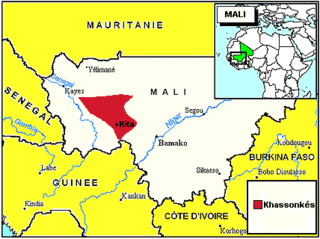 W
WThe Khassonké (CAH-KES-SON-QUE) are an ethnic group of Mali's Kayes Region. Descendants of the Fula and Malinké Khasso kingdoms, they speak the Khassonke/Xaasongaxango language, a Manding language similar to Bambara.
 W
WThe Kountas or Kuntas are described originally as Arabs, descendants of Uqba ibn Nafi, then as Berber Zenata. The Kunta tribe are also considered to have roots to Sidi Ahmad al-Bakkay, the founder, who died in the early 16th century. The Kunta originated in Qayrawan.
 W
WThe Mandinka or Malinke are a West African ethnic group primarily found in southern Mali, the Gambia, eastern Guinea and northern Ivory Coast. Numbering about 11 million, they are the largest subgroup of the Mandé peoples and one of the largest ethnic-linguistic groups in Africa. They speak the Manding languages in the Mande language family and a lingua franca in much of West Africa. Over 99% of Mandinka adhere to Islam. They are predominantly subsistence farmers and live in rural villages. Their largest urban center is Bamako, the capital of Mali.
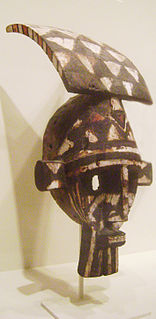 W
WThe Marka people are a Mande people of northwest Mali. They speak the Marka, a Manding language.
 W
WThe Nyamakala, or Nyamakalaw, are the historic occupational castes among Islamic societies of West Africa, particularly among the Mandinka people. The Nyamakala are known as Nyaxamalo among the Soninke people, and Nyenyo among the Wolof people. They are found throughout the Sahel region, from Mali and Senegal to Chad and several other parts of the West African region historically known as the "Western Sudan".
 W
WThe Samo is a sub-ethnic group of the Mandinka people from West Africa. They mainly live in northwest Burkina Faso and across the border in southern Mali.
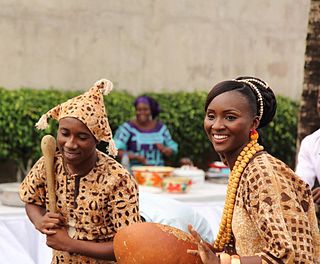 W
WThe Senufo people, also known as Siena, Senefo, Sene, Senoufo, and Syénambélé, are a West African ethnolinguistic group. They consist of diverse subgroups living in a region spanning the northern Ivory Coast, the southeastern Mali and the western Burkina Faso. One sub-group, the Nafana, is found in north-western Ghana.
 W
WThe Songhai people of Mali, often referred to as Gao-boro, Koyraboro, Gao-gao, Gaawo-boro, Koroboro are a subgroup of the broader Songhay ethnic group. They are primarily found in the region of Gao, Timbuktu and other regions in Mali. The expression "Gao-boro" or "Koroboro" means "the people of Gao" or "the town dwellers", as opposed to nomads like the Tuareg people and other transhumant people.
 W
WThe Soninke people are a West African Mande-speaking ethnic group found in eastern Senegal and its capital Dakar, northwestern Mali and Fouta Djallon in Guinea, The Gambia and southern Mauritania. They speak the Soninke language, also called Maraka language, which is one of the Mande languages. Soninke people were the founders of the ancient empire of Ghana c. 750–1240 CE. Subgroups of Soninke include the Maraka and Wangara. When the Ghana empire was destroyed, the resulting diaspora brought Soninkes to Mali, Senegal, Mauritania, Gambia, Burkina Faso, Côte d'Ivoire, Guinée-Conakry, modern-day Republic of Ghana, and Guinea-Bissau where some of this trading diaspora was called Wangara.
 W
WThe Tellem were the people who inhabited the Bandiagara Escarpment in Mali between the 11th and 16th centuries CE. The Dogon people migrated to the escarpment region around the 14th century. In the rock cells of this red cliff, clay constructions shelter the bones of the Tellem as well as vestiges witnessing their civilization, well before that of the Dogons.
 W
WToloy is the name given to the first occupants of the Bandiagara Escarpment in Mali. Since the 15th century, this area has been known as Dogon country.
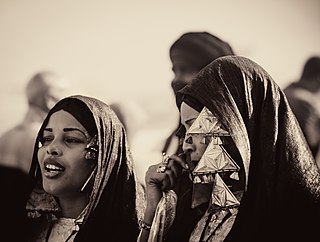 W
WThe Tuareg people are a large Berber ethnic group that principally inhabit the Sahara in a vast area stretching from far southwestern Libya to southern Algeria, Niger, Mali and Burkina Faso. Traditionally nomadic pastoralists, small groups of Tuareg are also found in northern Nigeria.
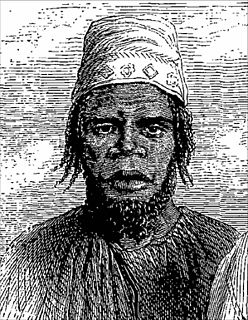 W
WThe Yalunka, or Dialonké, are a Mandé people who were one of the original inhabitants of the Futa Jallon, a mountainous region in Guinea, West Africa. The Yalunka people live primarily in Guinea, particularly in Faranah, while smaller communities are found in Kouroussa. Additional Yalunka are also located in northeastern Sierra Leone, southeastern Senegal, and southwestern Mali.